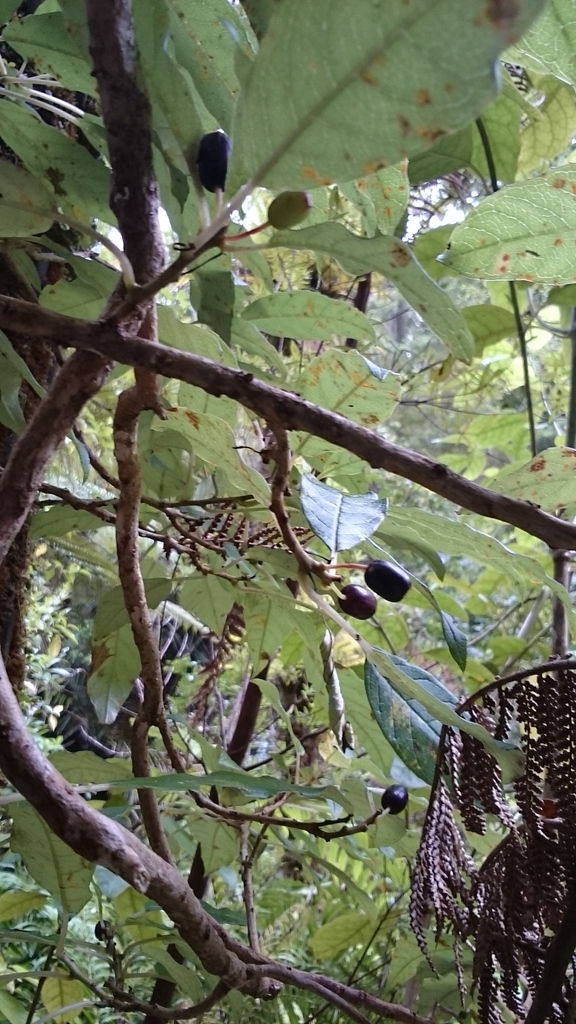June - Kōtukutuku - Native Plant of the Month
- Pest Free Kaipatiki

- May 27, 2022
- 3 min read
Updated: Jun 16, 2025
Fuchsia excorticata

You might already be familiar with Fuchsia, possibly from seeing them in your nana’s garden. They are commonly grown in old fashioned flower gardens. Fuchsia are flowering bushy plants with bright pink/purple flowers that hang like ballerina lanterns from their branches. Fuchsia (pronounced “few - sha”) are named after Leonhart Fuchs - who is considered one of the founding fathers of western botany. Most fuchsia originate in South America, where they are pollinated by hummingbirds.
As New Zealanders we pride ourselves on being a bit different to the rest of the world, and our fuchsia are no different. Not only do we have three of only four species native outside the Americas (the fourth is found in Tahiti), but we also have the biggest and one of the smallest. Kōtukutuku, or tree fuchsia is the world’s biggest fuchsia and the only species that grows as a tree, rather than a shrub. Our second species of fuchsia grows as a rare trailing coastal groundcover (which is capable of growing through kikuyu - quite the feat!). And the third is a scrambling shrubby climber that uses its spindly branches to grow up into surrounding trees. Interestingly this species (Fuchsia perscandens) and kōtukutuku will naturally hybridise when they grow near one another.
Leaves showing indented veins on top surface and silver undersides
While they might be much bigger than their tropical cousins, kōtukutuku still have flowers that show their family resemblance. Through spring and early summer they grow directly out of branches and hang downwards with a typical fuchsia shape. In place of hummingbirds our native tūi, korimako/bellbirds and tauhou/silvereyes feed on the nectar that the flowers produce and pollinate them. As the flowers age they signal this to the birds by changing colour from a blue-green to a purple-red. Our fuchsia are also famous for reputedly being the only flowers in the world with bright blue pollen! Maori women used to use this pollen as make-up to colour their lips.

Kōtukutuku can be found throughout the country - right down to the freezing Subantarctic Islands. In the northern regions, including Auckland, it tends to be found on stream margins and near the bottom of deep shady gullies. This is because it cannot cope with drying out over summer. In more southern areas kōtukutuku is fully deciduous in winter. It is one of very few native trees to lose its leaves in winter (kowhai are another). In mild climates that don’t have severe frost or snow the trees will often keep most of their leaves however. When they are fully deciduous kōtukutuku are a striking sight in the bush in winter. They often have gently twisting branches and their bark is a distinctive cinnamon orange colour. The scientific name for kōtukutuku is Fuchsia excorticata. Excorticata describes the way the trees shed their bark in loose, shaggy sheets. It is a soft, papery texture not dissimilar to tapa. Particularly when wet, the different layers of shedding bark glow with different tones of orange.


Kōtukutuku have edible fruit that are called kōnini by Māori. These are oval and dark purple when ripe. They are sweet, but don’t have a strong flavour. As well as people, kōnini are eaten by birds, including kererū, who disperse their seeds. A study has shown that kōtukutuku have another helper with this too - tree wētā also eat their fruit and successfully spread their seeds!
Kōtukutuku are obviously an important part of our bush, providing food (as well as shelter) to many different species. Unfortunately possums are also very fond of them. Possums can strip a tree of its leaves overnight and will quickly kill them through their enthusiastic feasting. Stands of bare-branched trees in spring or summer are a sure sign of possum damage. Yet another good reason to keep up the trapping!








Comments